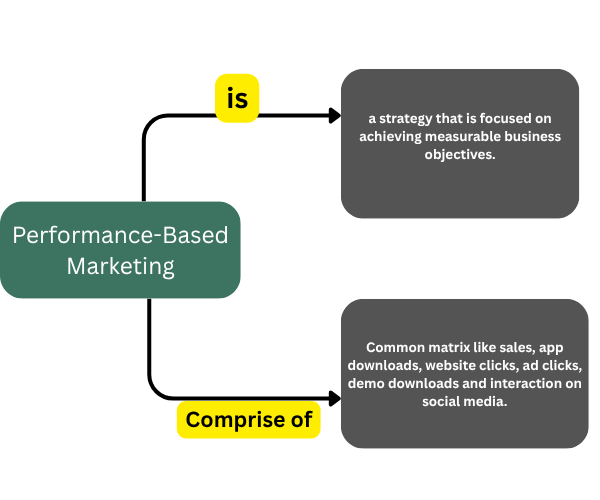
Performance-Based Marketing: How to Begin and Save Money Wisely
As the high-speed digital economy era we are living evolves, companies now move away from old-style advertising techniques towards something more actionable. One of the best means to make the move is Performance-Based Marketing (PBM) — an environment where you only pay for quantifiable outcomes in the form of clicks, leads, or transactions. By doing it this way, all your marketing dollars are directed to concrete outcomes. You can also check What is Googlebot & How Google’s Web Crawler Works in 2025
Regardless of whether you are an entrepreneur, a digital marketer, or an owner of a small business, this blog will walk you through:
- What Performance-Based Marketing is
- Why it’s necessary
- Where to begin
How to budget wisely for success
What is Performance-Based Marketing?
Performance-Based Marketing is a web advertising model in which you are paying only for the specific action being taken — i.e., a sale, a lead, a download, or a click. This is in contrast to old models where payment was made for ad placement or impressions without any regard to the outcome.
Typical PBM Channels Are:
- Affiliate Marketing
- Pay-Per-Click (PPC) Advertising (e.g., Google Ads, Bing Ads)
- Social Media Advertising (Facebook, Instagram, LinkedIn)
- Influencer Marketing (Paying per sale or lead)
- Email Marketing (Pay per opened email or conversion)
Why Performance-Based Marketing?
1. Lower Risk, Higher ROI
Since you’re paying only for outcomes, there’s very little wastage involved. Your investment is directly linked to your goal — sales, signups, or traffic.
2. Easy to Measure
PBM provides authentic performance figures through the assistance of analytics and conversion tracking software.
3. Scalable and Flexible
You can start small and scale up once results are proven. To grow your business, starting this is to take your business in the right direction
4. Goal-Oriented
Unlike branding campaigns, performance marketing ties directly into business goals like lead generation or product sales.
Where to Start with Performance-Based Marketing: detail Performance-Based Marketing:

Starting with PBM can seem overwhelming, especially with so many platforms and options. Here’s a clear roadmap to begin effectively.
Step 1: Define Your Goals
Begin by stating what you wish to accomplish:
- Do you need leads for your service business?
- Do you need sales for an online retailer?
- Do you need app installs or email sign-ups?
Make your goals SMART – Time-bound, Attainable and Relative
For example:
“We have 200 leads on our online course within 3 months with a CPA (cost per acquisition) of ₹150 or lower.”
Step 2: Know Your Audience
Knowing your audience assists in the selection of the most suitable platform and the development of convertable messages. Define:
Demographics (Age, Gender, Income)
Psychographics (Interests, Behaviors)
Online behavior (Where they hang out online)
Use tools such as:
Google Analytics
Meta (Facebook) Audience Insights
Surveys or Feedback Forms
Step 3: Select the Proper Channels
Select channels according to your product/service and audience activity.
Channel Best For
Google Adsypse High -intent search traffic
Facebook/Instagram Ads Visual products, B2C targeting
LinkedIn Ads B2B services and professionals
Affiliate Marketing eCommerce, SaaS, digital products
Influencer Marketing
Lifestyle brands, fashion, wellness
Begin with one or two channels. Scale and test by performance.
Step 4: Develop High-Converting Assets
You require solid creatives and converting landing pages. This entails:
Strong, compelling ad copy
Engaging imagery or video
strong call to action (CTA)
Sample CTA:
“This limited-time offer: sign up today and get your first consultation for free!”
“Save 20% on your first buy — limited time only!
Make sure your landing pages are mobile-optimized, fast to load, and consistent with your ad copy.
Step 5: Include Tracking and Analytics
Run the campaigns in advance and include tracking methods to monitor performance:
Google Analytics (with Goals/Events set up)
Meta Pixel for Facebook/Instagram Ads
UTM Parameters in URLs
Conversion tracking in Google Ads
Using all this we can look at the following metrics
CPA (Cost Per Acquisition)
CTR (Click-Through Rate)
ROAS (Return on Ad Spend)
Bounce Rate
How to Budget Smarter for Performance-Based Marketing
Now, let’s discuss money — how do you plan your PBM budget for intelligent, scalable ROI?
1. Scale Small and Scale Up
If we need to get data before scaling then let’s start with the testing budget first:
Test creatives, targeting, and landing pages.
Spend just enough for statistically significant results.
Example:
Start with ₹10,000–₹20,000 for a two-week test campaign. Check cost per result, then scale spend for high-performing campaigns.
2. Divide Your Budget by Funnel Stage
Budget your budget along the marketing funnel:
Funnel Stage Budget Allocation (%)
Purpose
Awareness 20–30% Nurture new audiences
Consideration 30–40% Educate and nurture prospects
Conversion 30–40% Driver leads/sales
Pro tip: Retarget more with ads to those already exposed to your brand — they convert better.
3. Set CPA or ROAS as Budget Anchors
Make CPA or ROAS your budget goal.
Sample CPA Formula:
If you want to get 100 leads and want to spend ₹150 per lead:
Only Budget = 100 leads × ₹150 = ₹15,000
Example ROAS Formula:
You are spending ₹10,000 and making ₹40,000 in revenue. ROAS = 4x
Utilize these numbers to see which campaigns are of greater budget worth.
4. Take Advantage of Automation Tools
Utilize platform automation for optimize spends:
Smart Bidding in Google Ads (e.g., Maximize Conversions)
Campaign Budget Optimization (CBO) in Meta Ads
AI-driven budget allocation software (e.g., Madgicx, Revealbot)
Assistance with automated budget allocation of your ads to top performers.
5. Track, Analyze, and Optimize
Track on a daily basis (particularly in the first week) and make adjustments:
Switch off losing ads
Scale up winning ads
Test new creatives every week
Use A/B testing on a regular basis for:
Ad headlines
Images versus videos
Call-to-action alternatives
Common Mistakes to Avoid
Not Tracking Conversions Properly:
No tracking = No insights. Utilize all tracking tools prior to launch.
Targeting Too Broadly:
Begin with niche targeting. Venture out later when you have a clue about what to do with.
Not Testing Enough:
Test different versions of your creatives, copy, and landing pages at all times.
Quitting Too Early:
Make your campaigns run long enough (7–14 days minimum) before you make judgments about performance.
Ignoring Mobile Experience:
Traffic is mainly mobile. If your landing page is slow or nonsensical on phones, you’ll lose leads.
Final Thoughts

Performance-Based Marketing is among the smartest investments in online growth. It lets you channel your budget where it counts most: tangible, measurable outcomes. Performance-Based Marketing- With clear goals in mind, knowing your audience, with the proper tools, and budget wisely, you can create high-ROI, scalable campaigns and long-term growth. Here I have explained in my words what Performance-Based Marketing is and I hope you will agree with this.
Whether you’re selling an online course, have an eCommerce store, or provide B2B services, PBM makes every rupee count.
Action Steps to Take Today:
Set one, simple goal (e.g., 100 email subscribers).
Set one channel (e.g., Instagram Ads or Google Ads).
Set a test budget.
Run, monitor, optimize for performance.
Leave a message or comment — let’s plan smart!
Quitting Too Early:
Make your campaigns run long enough (7–14 days minimum) before you make judgments about performance.
Ignoring Mobile Experience:
Traffic is mainly mobile. If your landing page is slow or nonsensical on phones, you’ll lose leads.



1 Comment
[…] marketing is a performance-based marketing strategy where individuals (affiliates) earn a commission by promoting other people’s or […]